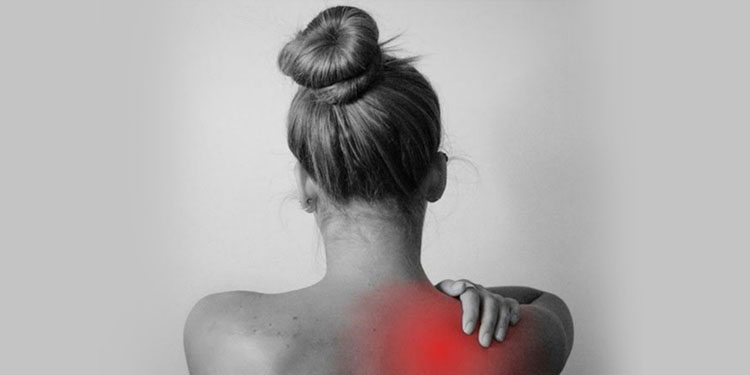
Shoulder injuries in the world of sport
Sports is good for you but it carries with it the risk of injuries. As punishingschedules and excessive training become par for the course, sports injuriesand their accurate management are gaining importance.
The incidence of sports-related injuries is stated to be as high as 11 per100 persons in the Olympic games. These injuries occur mostly in contactsports, which involve participants coming into bodily contact with oneanother. Football, hockey, martial arts etc. are examples. Not uncommonly,injuries may also be associated with non-contact sports. Amongst thevarious Olympic events, lower limb injuries alone constitute 20% of thecasualties, while head, neck and torso account for another 25%.Though not the most prevalent, shoulder joint injuries have often beenfound to cause debilitating infirmity for sportspersons.
Shoulder joint
The shoulder joint is the most mobile joint in the human body, yet it’sconsidered relatively unstable. It is a ball and socket type of joint whereinthe head of the humerus forms the ‘ball’ and the glenoid of the scapula, the‘socket’. There is a 4:1 ratio in surface area between the size of thehumeral head compared to the shallow glenoid fossa, and this sizedifference is responsible for the inherent instability of the joint. Its stability,therefore, is dependent on the soft tissues surrounding it as well as on therotator cuff.
‘Rotator cuff’ is the common term for a group of four muscles and theirtendons surrounding the shoulder joint. These include Supraspinatus,Infraspinatus, Teres minor and Subscapularis.
Acute or chronic injuries
Injuries around the shoulder may be acute (of sudden onset) or chronic(due to continuous overuse). Acute shoulder joint injuries include acutestrain/sprain, acute dislocation, rotator cuff tears, SLAP (superior labral tearfrom anterior to posterior), and fractures of the humerus, scapula, clavicle.Chronic injuries include rotator cuff tendinopathy, degenerative rotator cuffinjury, long biceps tendinopathy and recurrent shoulder dislocation.
Shoulder dislocation
Dislocation may be classified as forward (anterior) or backward (posterior)shoulder dislocation. Bankart and Hill-Sachs lesions are specific injuries tothe glenoid labrum and humeral head respectively found in association witha forward dislocation. Backward dislocation of the humeral head iscomparatively rare and is often missed in diagnosis.
Rotator cuff tear
The rotator cuff plays a major role in shouldermobility, especially in flexion-extension andinternal external rotation movements. Any of thefour muscles may be damaged resulting insevere impairment of shoulder range of motion;however, it is the supraspinatus and the subscapularis that are commonlyinjured.
Tears may be partial or complete. Complete tears of the rotator cuff areclassified as C1 (small complete tear, pinhole-sized), C2 (tear less than 2cm of only one tendon, no retraction), C3 (large complete tear of an entiretendon, retraction of 3-4 cm) and C4 (massive tear involving two or moretendons of the rotator cuff).
Rotator cuff tears occur as a result of chronic overuse in sports involvingoverhead movements of the shoulder such as in swimming, golf, basketballetc. and due to trauma in contact sports such as football, hockey etc.
SLAP lesion
The glenoid cavity is a shallow depression in the scapula on which thehumerus articulates to form the shoulder joint. The glenoid labrum is afibrocartilaginous rim attached around the margin of the glenoid that helpsto deepen the cavity. SLAP (superior labral tear from anterior to posterior)is a form of tear of the glenoid labrum caused by repetitive overheadthrowing and lifting, or catching heavy objects above the shoulder height.Common sports associated with the injury include swimming, bowling,javelin etc.
Shoulder fracture
Fractures of the clavicle, humerus, scapula and glenoid are commonaround the shoulder. These usually occur due to trauma in contact sportslike football, wrestling, hockey etc. They may also be associated with sportssuch as biking, skateboarding etc. where there is a chance of heavy falling.Clavicle or collarbone fracture is comparatively rare and forms only 3% ofthe fractures around the shoulder.
Management of shoulder injuries
As with any other injury, management guidelinesfollowing a shoulder injury also consist of:
1. A clinical examination
2. Investigation and imaging
3. Treatment
A proper clinical examination by a trained physician/surgeon forms the cruxfor accurate diagnosis of the injury. Specific blood tests may be donebased on the underlying condition. However, a complete blood profile isoften required if surgery is to be performed.
Imaging investigations include plain X ray, CT scan and/or MRI of theshoulder joint, especially if rotator cuff or soft tissue injury is suspected.The treatment challenge in a sports injury is the need to revert back tonormal or near-normal at the earliest, in order to allow the players topractice and perform. The treatment options in a shoulder joint injury maybe non-operative or operative. There are definite evidence-basedguidelines available today to identify which shoulder injury needs operativemanagement versus non-operative management.
In acute cases, non-operative management includes Rest, Ice,Compression, and Elevation (RICE) followed by medication (pain-relief andanti-inflammatory) and physiotherapy (electrotherapy, exercise therapy).Operative management consists of either open surgery orarthroscopic/keyhole surgery. Open surgery is rarely performed now andhas certain strict indications as in shoulder dislocation, fractures etc. For allother conditions, an arthroscopy may be performed.
Arthroscopy or keyhole surgery
Arthroscopic surgery is of gaining importance in the world of sports and is acommon procedure for most shoulder injuries. The word arthroscopy isderived from the Greek terms ‘arthro’ (relating to joints) and ‘scopy’(meaning ‘looking into’).
An arthroscopy is not just a treatment procedure but can be diagnostic andcan supplant non-invasive imaging techniques. This minimally invasiveprocedure is performed using endoscopes which are inserted into theconcerned joint through one or two small incisions.
Compared to open surgery, arthroscopy has multiple advantages. Scopysurgeries are cosmetically better due to small incisions and are associatedwith lesser blood loss, faster recovery, faster healing and shorter hospitalstay. Arthroscopy may be performed as a day care surgery and involvesless use of pain medications. Infections and neuro-vascular injuries mayoccur later but the complication rates are lower compared to open surgery.

Dr. Nijith O Govindan (BPT, MBBS, MS Orthopaedics)
Consultant Orthopaedic Surgeon
Lakshmi Group of Hospitals, Cochin, Kerala, India – 682 016
Phone: 9475601731
